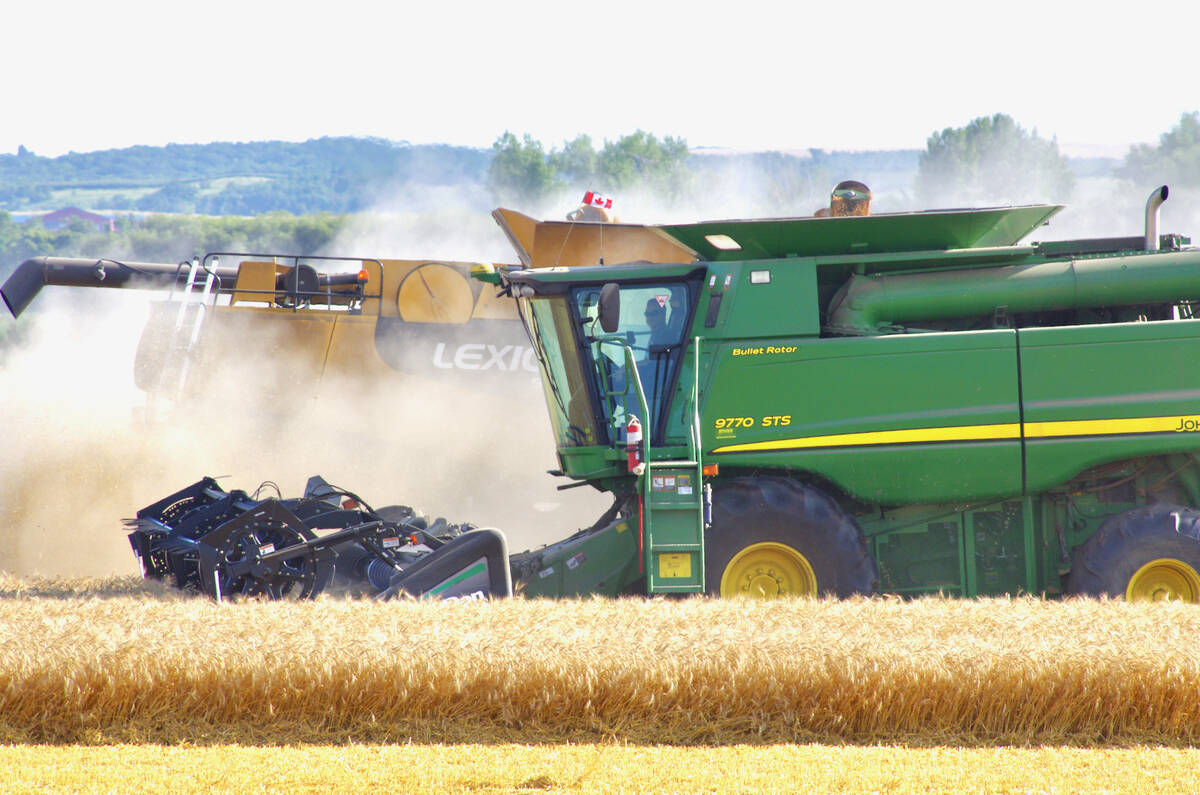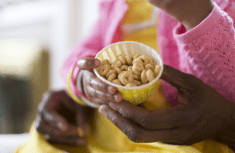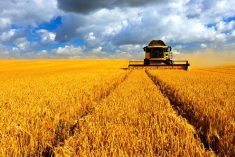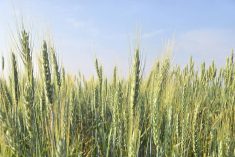John Heard, a soil fertility specialist with Manitoba Agriculture, has been calling for years for on-farm agronomic research in the province.
His dream became reality last year when the Manitoba Pulse Growers Association initiated a farmer research network.
Ten soybean growers in eastern Manitoba set up strip trials across their fields to assess how lower seeding rates effect yield. Each producer reduced their normal seeding rates by 30,000 seeds per acre on six half-mile strips.
Ron Tone, an agricultural consultant in St. Pierre, Man., sorted through the data and determined a lower seeding rate had a minimal impact on yields.
Read Also

Manitoba harvest hits halfway mark: report
Harvest progress in Manitoba hit the halfway mark during the week ended Sept. 16, according to the latest crop report from the provincial agriculture department.
“We found a .6 bushel increase at the higher rate … on the average,” said Tone, who co-ordinated the research for the MPGA.
“Some trials showed higher and some showed a negative response to higher (seeding rates).”
Reducing the seeding rate by 30,000 seeds represents a cost saving of $11 to $15 per acre, Tone said. A 0.6 bu. increase represents about $8 per acre, assuming a price of $14 per bu.
Therefore, farmers would earn $3 to $7 more per acre if they cut their seeding rate by 30,000 seeds.
The research isn’t complete because the MPGA plans to replicate the trials on 10 soybean fields in 2013 and 2014, but Tone said the initial results demonstrate that an on-farm research network can provide answers to pervasive agronomic questions.
“I’ve always wanted to do something like this with (Manitoba) farmers,” said Tone, a certified crop adviser.
He modelled the soybean on-farm network after the Iowa Soybean Association, which uses yield monitors and GPS to assess the value of an alternative growing practices.
As an example of how on-farm research can work in Manitoba, Tone said soybean growers often use granular inoculants in the row and treat their seed with inoculant.
A group of soybean growers could easily run strip trials on their land to determine if a single inoculant is sufficient.
“Maybe just (use) the seed inoculant to see if there’s a (yield) difference,” Tone said.
Heard said he has lobbied for an on-farm research network in the province for a number of years. The Iowa model proves growers can find answers to agronomic questions on their own, he added.
“I’ve been frustrated that (with) all these farmer questions … that we don’t have a disciplined and organized on-farm testing network of farmers,” he told a special crops production day in Brandon March 6.
“I come from Ontario, where there’s an Ontario Soil Crop Improvement Association, where we always co-ordinated tests done on-farm,” he said.
A network of farmers performing a trial is statistically and scientifically more powerful than one producer conducting a strip trial on his farm, Heard said.
Heard, who discussed American research during a presentation in Brandon about soil compaction, said he would rather present subsoiling data from Manitoba farms.
“I would love to stand up … and show people their own results,” he said.
“If farmers here had evaluated it, like the Iowa farmers … and (we) had a central repository to report the results … we wouldn’t be asking this question (about subsoiling) all the time.”
Michael Reimer, MPGA’s acting executive director, said the program could potentially fill a research void.
“You still need that primary research that’s done by universities and government … but it’s a nice complement to that.”
Iowa Soybean Association On Farm Network
The Iowa Soybean Association launched its On-Farm Network in 2000.
Trials are replicated strips, marked with GPS, on grower fields. The strips compare a grower’s normal practice with just one alternative.
The network uses a variety of tools, including yield monitors, GPS and remote sensing, to collect data from the trials.
Farmers in the network conducted hundreds of strip trials on soybeans and corn in 2012, , examining the impact of seed treatments, fertilizers and pesticides.
In 2011, Missouri became the 11th state to create an on-farm network, based on the Iowa model.
Source: www.isafarmnet.com















